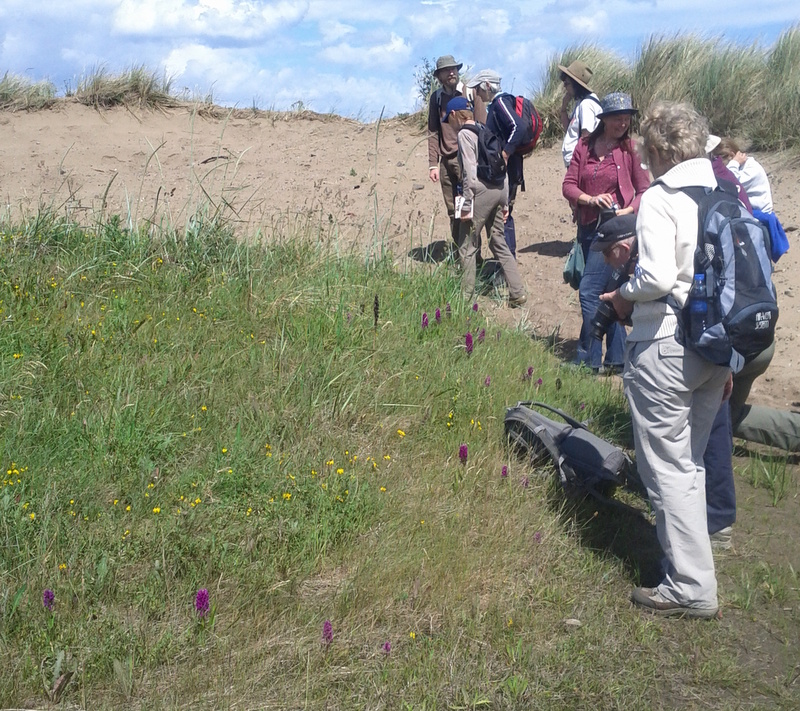Saturday 27th June at South Gare
Posted on 19th July 2015
An absolutely sparkling, sunny, summer morning…but windy.
We started by the roadside admiring Bloody Crane’s-bill, as you do, which was in full magenta flower and adjacent to blue-flowered Geranium x magnificum a sterile garden crane’s-bill so certainly the result of someone dumping garden rubbish and coincidently not recorded at South Gare before: A new record a few metres from where the cars were parked…and it got better.
But first a little history lesson – I brought along maps and everything; unfortunately no-one had reading glasses, fortunately it’s the thought that counts. South Gare was built from waste slag from the steelworks starting in 1861 and finishing in 1888. So everything we saw growing arrived after that…before that date it was mud flats or sea depending on whether the tide was in or out.
We walked onto an area of weathered slag where an interesting mix of calcareous and garden plants grow together. There were spectacular displays of the garden Snapdragon, some Broad-leaved Everlasting-pea just starting to flower and some fine Sweet-Williams. Of the natives were Kidney Vetch in the final throws of flowering, Blue Fleabane, Yellow-wort and Fairy Flax. Ploughman’s-spikenard, though still in bud, was a pleasant surprise here.
And so over to where the sand dunes blended into the slag where we discovered Purple Milk-vetch flowering in abundance amongst the Marram. From here we walked over towards the industry where our goal was a large open and damp dune slack that was once inundated by seawater every year but is now landlocked after sand piled up at the entrance. On the way we saw much Hop-trefoil and had a discussion over a patch of Alliums that were eventually determined as Wild Onion thanks to John Poland’s invaluable vegetative flora. The Wild Onion was in bud, so looked little more than scattered green sticks amongst the dunes. You can imagine just how riveted everyone was…
Anyway, when we got to the dune slack we were treated to a splendid display of yellow Common Bird’s-foot-trefoil dotted with the deep purple of Northern Marsh-orchid and on closer inspection the tiny soft pink flowers of Sea-milkwort and the subtle interest of a small carpet of Few-flowered Spike-rush.
From there we headed over the dunes towards the sea, pausing to admire the various Oraches that were growing in the sand before walking along the shore back towards the Gare.
Just before arriving we nipped onto the dunes up and down as I thought I’d remembered where there was some Sea Holly growing. I nearly was right….it was the next dune nearer the sea, but we got there in the end and it was much admired. It is only recently here, having been recorded in 2001and since spread a little.
And then over to the Gare itself where a rare white-flowered form of Common Restharrow was flowering near to some Bee Orchids on the thin layer of sand that had accumulated on the concrete edge.



